#scots guards
Text

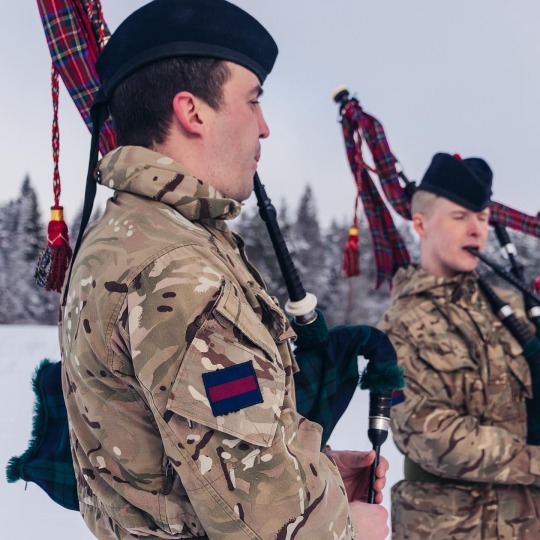
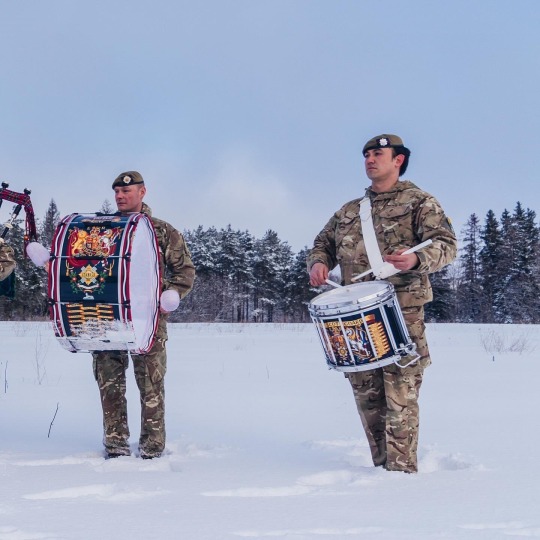
Here the Scots Guards Pipes and Drums brave the winter chill, echoing their melodies through the snowy trenches and snowy fields. A timeless tribute to all Scots Guards, past and present.
📸 @salopian_photography
147 notes
·
View notes
Text

The reward of one duty is the power to fulfil another.
George Eliot
HRH Prince Edward, Duke of Kent is one of the most underrated members of the Royal Family, always stoic he’s always been dependable and never flusters, the world needs more 'Steady Eddies'.
There’s no question that the Duke of Kent’s dedication to serving the crown and the country is beyond reproach. For over 50 years, the Duke of Kent has been performing royal duties and on behalf of the monarchy. HRH Prince Edward at a young age filled a huge role vacated by the untimely death of his father in 1942. Since then, the Duke of Kent has ceaselessly spent much of his time performing ceremonial functions, attending charitable causes and supporting various organisations on behalf of his cousin Queen Elizabeth II and the British Monarchy. He has represented Her Majesty in the independence celebrations in the former British colonies of Sierra Leone, Uganda, Guyana, and Gambia. Most recently he has attended the 50th Independence Anniversary Celebration of Ghana. He has also acted as Counselor of State during periods of the Queen's absence abroad.
What is often forgotten is that HRH Prince Edward was a fine soldier. Much like the late Duke of Edinburgh’s naval service was subsumed by his royal persona, the Duke of Kent has never let his royal duties interfere with his army career.
Prince Edward attended Ludgrove in Berkshire for his preparatory education. He then proceeded to Eton College and later in Le Rosey in Switzerland. After school, he attended the Royal Military Academy in Sandhurst, where he won the Sir James Moncrieff Grierson prize for foreign languages. After graduating from Sandhurst in 1955, the duke joined the Royal Scots Grey as Second Lieutenant. That was the start of a military career that spanned over 20 years, one which took him to various places around the world.
In 1961, he was promoted Captain; Major in 1967; and Lieutenant Colonel in 1973. In 1970 the Duke commanded a squadron of his regiment serving in the British Sovereign Base Area in Cyprus, part of the UN force enforcing peace between the Greek and Turkish halves of the island. The duke also spent time commanding a unit in Northern Ireland shortly after the Troubles in the 1970s broke out, but was recalled early on grounds of security.
The duke now maintains his link with the services mainly through honorary rank, which includes that of Colonel of the Scots Guards. He was personal aide-de-camp to his cousin Queen Elizabeth II who promoted him supernumerary Major General on her official birthday in 1983. He was later made a Field Marshal in 1993.
HRH Prince Edward is the longest-serving royal colonel in history. Not just of the Scots Guards but of any regiment in the British Army.
#eliot#george eliot#quote#HRH Prince Edward#duke of kent#british army#british monarchy#monarchy#service#duty#honour#scots guards#regiment#royal scots grey#britain#british
51 notes
·
View notes
Text
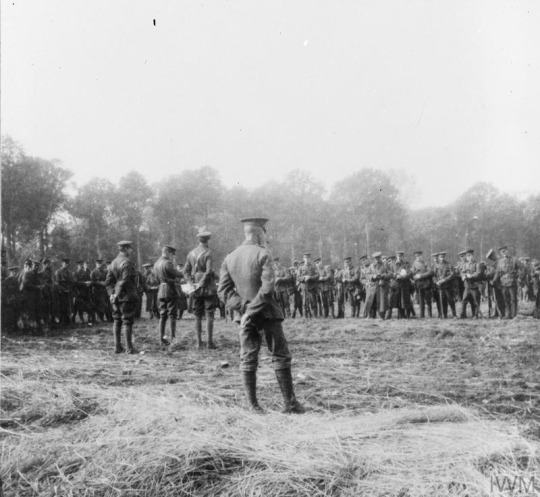
Reading the address of General John French to the 2nd Battalion, Scots Guards, Menin Road, October 1914.
1 note
·
View note
Text
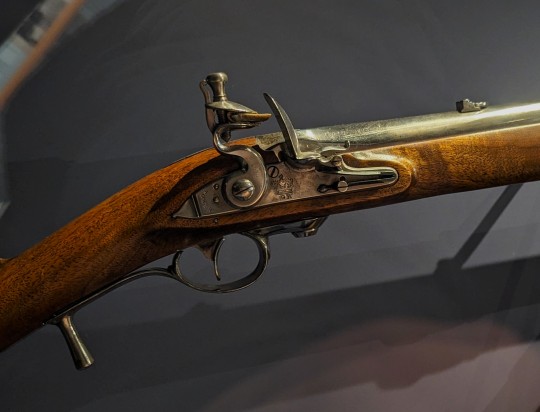
"Ferguson" Breech-Loading Rifle from Aberdeen, Scotland dated to 1776 on display at the Royal Scots Dragoon Guards Museum in Edinburgh Castle, Scotland
These rifles were invented by Lieut-Colonel Patrick Ferguson of Pitfour, Aberdeenshire. Ferguson's improved quick thread breech-loading rifle was an improvement on an earlier invention. He served as a subaltern in the Royal North British Dargoons (Scots Greys) from 1759 to 1762. Ferguson was killed in South Carolina at the Battle of King's Mountain in 1780 during the American Revolutionary War.
Photographs taken by myself 2023
#military history#18th century#hanover#gerogian#british empire#scotland#scottish#royal scots dragoon guards museum#edinburgh#barbucomedie
104 notes
·
View notes
Text
Found Him
Major Jonny Thompson of the Scot Guard
Apparently lots of folks were asking about his identity,too, and someone on DM answered.
https://www.dailymail.co.uk/femail/article-10881669/Lady-Sarah-Chatto-joined-sons-Arthur-23-Samuel-25-National-Service-Thanksgiving.html#reader-comments
OK you cougars….here’s the mystery man👆👆👆 lemme see if I can find pics. Thank you Anon.
ETA pics….damn, he is hot 🔥 I wonder if he was another babysitter. They weren’t taking chances.

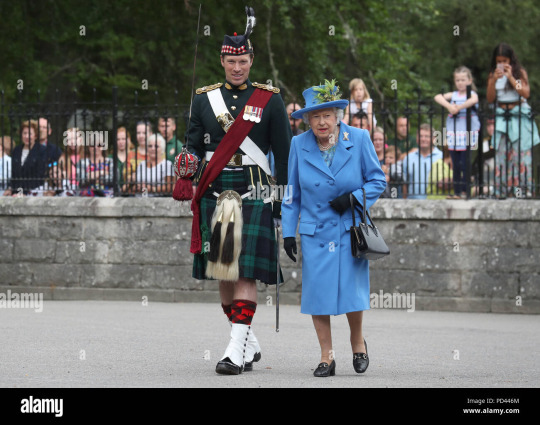

151 notes
·
View notes
Text

The Royal Scots Dragoon Guards Pipes and Drums - Auld Lang Syne (2008)
w/ The Band of The Coldstream Guards
Robert Burns / Traditional
from: "Auld Lang Syne" (LP|CD)
Pipe Major: SSGT Derek Potter
Director of Music: Lieutenant Colonel Graham O. Smith (MBE)
Scottish | Pipes and Drums | Celtic
JukeHostUK
(left click = play)
(320kbps)
Recorded:
@ The Angel Studios
in London, England UK
#Auld Lang Syne#Traditional#Scottish#New Year's#The Royal Scots Dragoon Guards Pipes and Drums#The Band of The Coldstream Guards#Robert Burns#Pipes and Drums#Bagpipes
5 notes
·
View notes
Text
U.S. Memorial Day, 2023

The Pipes and Drums and Military Band of The Royal Scots Dragoon Guards - Amazing Grace (1967)
Traditional
from:
"Heart of the Highlands:
The Great Celtics Anthems of Scotland"
(2002 Compilation)
Arranged by Graham Owen Jones
JukeHostUK
(left click = play)
(320kbps)

#Amazing Grace#Memorial Day#The Royal Scots Dragoon Guards#Pipes and Drums#Scottish#Graham Owen Jones#Heart of the Highlands#U.S. Memorial Day
3 notes
·
View notes
Photo

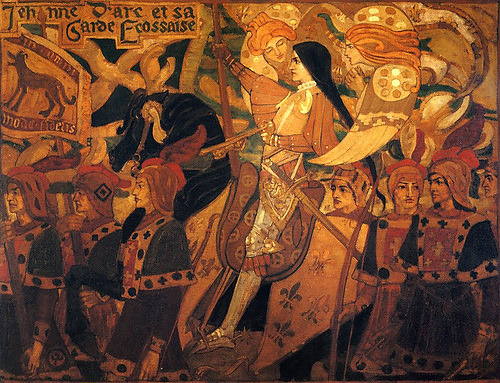
On April 29th 1429 Joan of Arc arrived to relieve the Siege of Orléans.
“The enemy of my enemy is my friend.” This ancient saying has been invoked many times throughout history, but one of the most successful examples of this logic was the Auld Alliance between France and Scotland.
Although the Auld Alliance was founded out of a mutual hatred of England in 1295, the French and the Scots grew closer over time. France sent significant aid to Scotland, particularly during their Second War of Independence against England. In return, Scotland reinforced the French army during the Hundred Years’ War.
It was during the latter days of the Hundred Years’ War that the French King created an elite personal bodyguard comprised of Scottish warriors called the Garde Écossaise (Scottish Guard).
Scottish forces served in the French military throughout most of the Hundred Years’ War, earning a reputation as capable fighters in the process. A Scottish force under John Stewart, Earl of Buchan, and Sir John Stewart of Darnley arrived in France in 1419 to great fanfare.
The Dauphin (heir apparent to the French throne) was in desperate need of help as his father, King Charles VI, suffered from a form of insanity and had few allies. For his own safety, the Dauphin picked out around 100 of the finest Scottish warriors to be his personal bodyguard, thus creating what would come to be known as the Garde Écossaise. In its early days, the Garde was primarily composed of archers, with some men-at-arms.
The Dauphin took further actions to secure Scottish loyalty. The Earl of Buchan was given land at Châtillon-sur-Indre, Stewart of Darnley was provided with land at Concressault and Aubigny, and several other Scottish leaders received land and castles, this was even before they even fought a battle on French soil!
However, that soon changed at the Battle of Baugé, as the French were still reeling from the Battle of Agincourt. The Scots’ performance at Baugé ended up leading to one of their most heroic victories.
Accounts of the battle vary by source, but it is clear that the English, under the Duke of Clarence, attempted to catch the Franco-Scottish force off guard. However, the Scots turned the tide of the battle by holding their ground at a bridge as the English tried to cross.
French forces soon reinforced them, leaving the English badly outnumbered as they had only brought part of their force for this assault. The English eventually forced their way across the bridge but were met and outflanked by the larger force. The Duke of Clarence was killed in the melee, and the English force was routed.
In return for their service, Scottish leaders were granted more lands. The Earl of Buchan was given the title Constable of France, essentially making him commander of the French armies. Unfortunately for the Scots, this success did not last.
The French-Scottish force suffered a crushing defeat at the Battle of Cravant during which Buchan was captured. The French forces fell back during an attempted river crossing, and the Scots were cut down as they stood alone against the English.
Buchan was exchanged but then killed during another disastrous defeat at the Battle of Verneuil after French troops once again retreated early in the battle and left the Scots to face the English alone.
However, the Garde Écossaise remained and continued to prove themselves throughout the Hundred Years’ War and beyond.
In 1429, a mere five years after the French-Scottish defeat at Cravant, Joan of Arc marched into Orléans to the sound of bagpipes. She entered the city accompanied by a guard of around 60 Scottish men-at-arms and 70 archers. The pipers played Hey Tuttie Tatie – the song that, legend has it, was played for Robert the Bruce as he marched into battle at Bannockburn.
In fact, Scottish soldiers made up a significant portion of the relief army as a whole in addition to Joan’s guard.
The pics are, Joan of Arc enters Orléans by Jean-Jacques Scherrer, 1887 and Jehanne d'Arc et sa Garde écossaise. Painting by John Duncan, Scottish symbolist painter (1866–1945)
#France#french#scots#Scotland#scottish#Gardes Écossaises#the auld alliance#Joan of Arc#Scottish Guards#hundred years war#history
39 notes
·
View notes
Text
youtube
1 note
·
View note
Text
also i need the HBO execs that are in charge from ASOIAF to let GRRM take FULL control because the omitions and certain changes are just.... bruh.... and like im sorry but a world POST-BRBA and BCS how come they cannot see how the complexity that GRRM gives to his characters ARE more than welcomed in TV. IT MAKES GOOD TV. But they want to somehow take the fangs away from certain characters that WOULD BE far more compelling than just :( makes doe eyes at the camera* and mind you SOME changes ARE needed but the more considerable ones didnt make sense.
#example 1:#how cole killed Joffrey he just went to town on his face AT RHAENYRA'S wedding but got scots free??? and no explanation needed#and actually it got him a reward??? from princess' guard TO the Queen's guard#vs how he killed him on the books with plausibility of: oh it accident#also VERY specifically to hurt rhaenyra and laenor's lovers#Breaking harwin's clavicle and other bones and literally killing joffrey#and like also makes bigger emphasis on how the greens previous to the conflict used institutions to hide behind in order to hurt Rhaenyra
0 notes
Text

Scots Guardsman, 1799.
23 notes
·
View notes
Photo
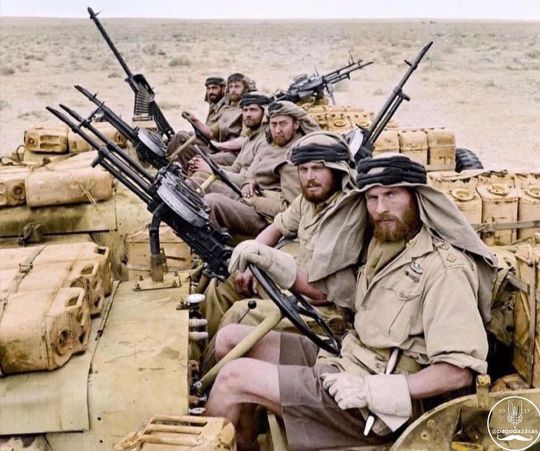


Θαρσαλέος ανήρ εν πάσιν αμείνων.**
- Homer
**The courageous man is the best in everything.
The photos of a patrol from the SAS returning after a 3 month patrol is one of the mosy iconic. Many mistakenly believe it is a patrol of the Long Range Desert Group (LRDG).
The series of photos were taken by a Captain Geoffrey Keating of The No.1 British Army Film and Photographic Unit.
The series of photos shows the patrol’s commander Lieutenant Edward MacDonald at the drivers seat of the jeep closest to the camera. In the photos we also see their boss, David Stirling has come out to meet them.
A keen eye will note the SAS wings on MacDonald’s left breast and a signature F/S dagger on his belt.
The date of the photo is January 18, 1943. It would be a matter of days when Stirling would be captured and would spend the rest of the War as a German POW.
These photos are referred to as “The Return of the Scots Patrol” as the troopers home regiments:
- furthest from Camera to Lt McDonald: Jocky Henderson (Scots Guards); Jock Mcdiarmaid (Black Watch); Dave Goldie (Scots Guards); Malcom Mackinnon (Scots Guards); William “Bill” Kennedy (Royal Scots Greys) and Lt. Edward MacDonald of the Cameron Highlanders.
The SAS was formed specifically to carry out deep penetration, covert reconnaissance patrols, intelligence missions and combat operations against the axis forces during World War 2. The small patrols were specialists in hit and run operations in the desert. These patrols launched covert attacks against high-value targets such as ships and airfields. Working in units of six to ten troopers, they would have the flexibility and stealth to achieve what larger forces couldn’t.
Who Dares Wins
#homer#greek art#classical memes#quote#SAS#the regiment#who dares wins#second world war#david stirling#scots guards#desert#north africa#edward macdonald#special forces#uk special forces#british army#military#history
132 notes
·
View notes
Text
ghost who eloped with his spouse, who moved into a small house for about a month before he had to fly out on a missions outside of england. hell, the place was pretty bare and he couldn't even manage to put in some nice furniture before price told him to get his arse into a plane to russia for a five month long mission. didn't even get to enjoy some honeymoon before his job fucked him over.
safe to say, he hadn't established a routine at his new home yet ever since he moved out of his barracks room at the base. he was only at home for a little while, it only makes sense that he doesn't know where everything goes sometimes. and of course, he somehow misplaced himself.
at the end of the deployment, he was too tired to even care. his eyes were so heavy and tired that he made his way back to his old barracks room, kicking the door down and throwing his bags to the side (and scaring poor soap who was asleep on the bed, since of course he's the one who took ghost's old room back at the base).
his eyes met the scot, a little confused as to why he sees someone on his bed.
"whit the hell!? lt!? did the missus kick ye out?" soap groaned, scared shitless as he tries to calm his heart.
the question took him off guard, and he stood by the doorway quietly, just processing it.
"... i have a spouse."
"ye eedjit." soap shook his head, telling him to leave soon or else an angry spouse will buzz off his mohawk.
poor ghost, rushed out of the base in the middle of the night trying to get back home. he's got a lot of apologizing to do. hopefully his spouse was asleep and didn't realize that he practically drove twice over the speed limit and possibly ran over someone just to get to his spouse's arms.
#i tried my best with the scottish im so sorryyyy#call of duty#call of duty modern warfare#simon ghost riley#ghost cod#simon riley#simon ghost riley x reader#simon riley x reader#cod ghost x reader#call of duty headcanon#cod headcanon#elope
7K notes
·
View notes
Text
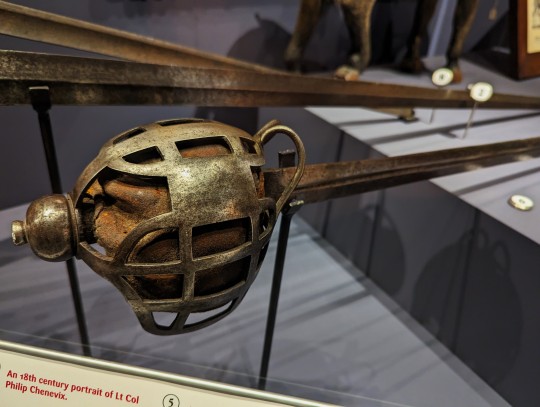
Basket-Hilted Cavalry Sword from the British Empire dated to the Mid-18th Century on display at the Royal Scots Dragoon Guards Museum in Edinburgh Castle, Scotland
Swords of this type were purchased by the colonels of the British cavalry regiments for the use of their men. The styles of hilt varied from regiment to regiment. Basket-hilted swords became popular, not just with Scottish regiments but many cavalry regiments around Europe.
The 2nd Royal North British Dragoons were part of the War of Austrian Succession (1740 - 1748) as part of the coalition forces. They fought at the battle of Dettingen in 1743 where King George II became the last British monarch to fight in a battle. In 1745 the last Jacobite Rising took place and unlike in the last risings the regiment were left in Flanders.
Photographs taken by myself 2023
#sword#british empire#cavalry#scotland#scottish#military history#18th century#georgian#hanoverian#royal scots dragoon guards museum#edinburgh castle#barbucomedie
43 notes
·
View notes
Text
He's Back
Just in case the picture doesn't come through here he is, photo #4
https://www.dailymail.co.uk/femail/article-10969771/Queen-96-joins-Prince-Charles-watch-military-parade-Holyroodhouse.html
Oh my, yes he is back😋😋😋 thank you


141 notes
·
View notes
Text

Pic of the Day.
Richard Madden. The Bodyguard.
So they can show me a post of a man jerking off and they think this post is mature? Jeez.
0 notes